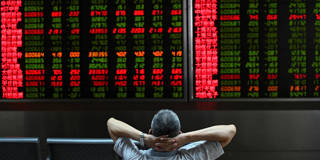Even as growth nears 6%, many Chinese economists oppose monetary and fiscal stimulus, citing everything from population aging to debt risk. But their arguments are far weaker than they seem – and far less convincing than the case for expansionary policies.
BEIJING – In November, I pointed out that, since the global financial crisis a decade ago, China has allowed annual GDP growth to fall gradually from over 10% to nearly 6%. While a decline was appropriate, I wrote, it is time to stem the slowdown with expansionary monetary and fiscal policies. Unexpectedly, my view sparked a heated debate among influential Chinese economists.

BEIJING – In November, I pointed out that, since the global financial crisis a decade ago, China has allowed annual GDP growth to fall gradually from over 10% to nearly 6%. While a decline was appropriate, I wrote, it is time to stem the slowdown with expansionary monetary and fiscal policies. Unexpectedly, my view sparked a heated debate among influential Chinese economists.